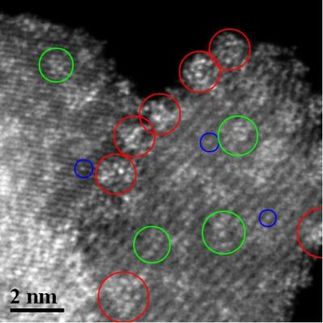Lonza: Preparation of carboxylates from chloroheterocycles by the palladium-catalyzed alkoxycarbonylation
Advertisement
palladium mediated coupling reactions have become important tools in synthetic organic chemistry. The functionalization of aryl molecules with carbon monoxide to yield carbonyl compounds represents a rapidly growing area of investigation. Among the carboxylic acid derivatives accessible by this chemistry, esters are certainly the most reported in the literature. Primarily this is due to experimental convenience, the alcohol can be often used as solvent and the ester formed is sufficiently stable for isolation and purification purposes. In general, these transformations are successful with aryl bromides or iodides.
Nevertheless, this concept has only been seldom applied to heteroaryl molecules, though the carbonylation of heterocyclic halides could provide an attractive method for the synthesis of esters and amides of heterocyclic carboxylic acids derived from pyridine, pyrazine or quinoline. However, most procedures reported in recent years used expensive iodo- or bromoheterocycles as starting materials. Indeed, only a few examples of alkoxycarbonylation of chloropyridines can be found in the literature and the yields are usually fairly low and the reaction conditions relatively harsh.
In continuation of our programme directed to the development of synthetic methods in heterocyclic chemistry, we report here the successful use of the carbonylation reaction concept for the synthesis of esters of different heterocyclic carboxylic acids. Their derivatives are highly useful in many organic synthetic applications and represent an important class of agricultural and pharmaceutical intermediates.
Careful study of the reaction parameters like the nature of the base, solvent, temperature, ligand, metal catalyst, etc. allow the minimization of the potential side reactions. In the case of dichloroheterocycles very good selectivities can be obtained by the right choice of the reaction conditions.
We have also shown that in the alkoxycarbonylation of 2,3-dichloro-5-(trifluoromethyl)pyridine that the process could be scaled up from 10 mmol (routine laboratory experiments) to 0.5 mol, affording ethyl 3-chloro-5-(trifluoromethyl)- pyridine-2-carboxylate with high selectivity in 94% isolated yield.
With the same concept, carboxamides have been prepared via amidocarbonylation of chloropyridines, process scale up to 2 kg was successfuly achieved.
Examples of alkoxycarbonylations of choro-, dichloro- and trichloropyridines, chloropyrimidines, chloromethylpyrimidines, chloropyridazines are reported in the following publications : (a) Bessard, Y.; Roduit, J.-P. Tetrahedron 1999, 55, 393. (b) Bessard, Y.; Crettaz, R. Tetrahedron, 1999, 55, 405. (c) Bessard, Y.; Crettaz, R. Heterocycles 1999, 51, 2589. Crettaz, R.; (d) Waser, J.; Bessard, Y.; submitted to Organic Process Research and Development.
Other news from the department
Most read news
More news from our other portals
See the theme worlds for related content
Topic world Synthesis
Chemical synthesis is at the heart of modern chemistry and enables the targeted production of molecules with specific properties. By combining starting materials in defined reaction conditions, chemists can create a wide range of compounds, from simple molecules to complex active ingredients.

Topic world Synthesis
Chemical synthesis is at the heart of modern chemistry and enables the targeted production of molecules with specific properties. By combining starting materials in defined reaction conditions, chemists can create a wide range of compounds, from simple molecules to complex active ingredients.













































